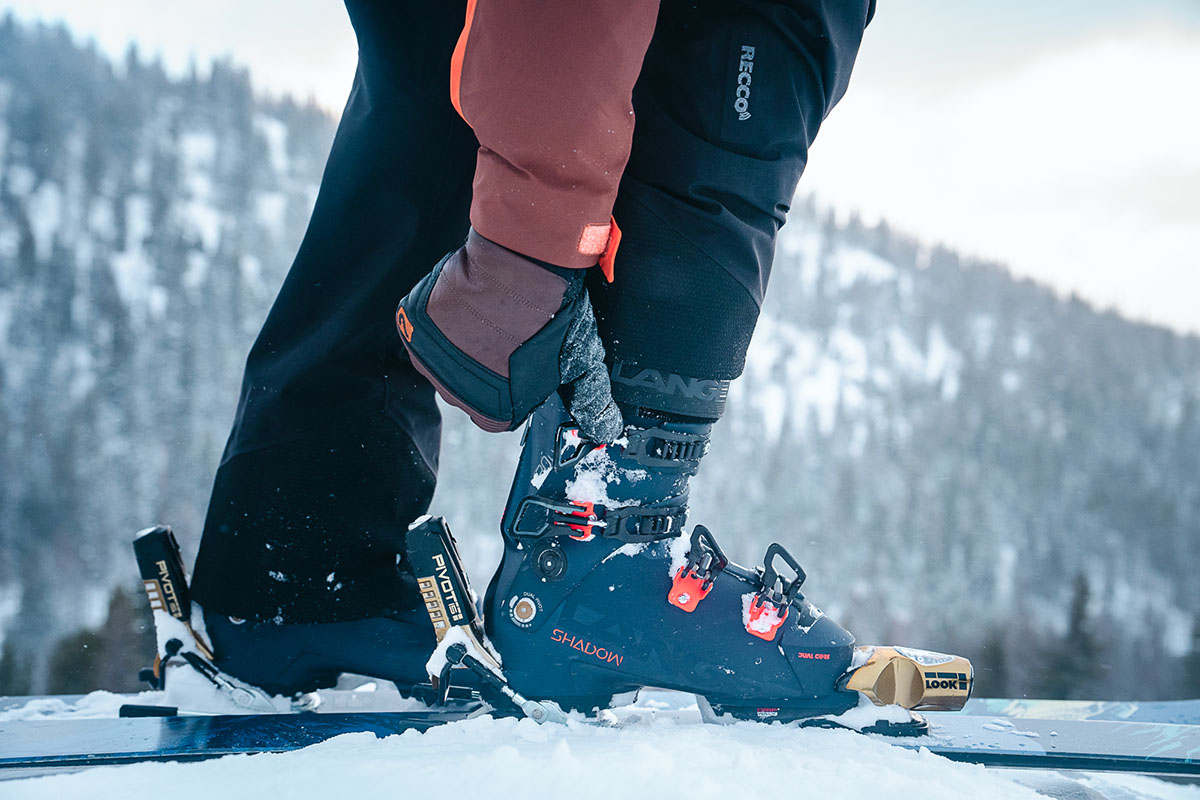
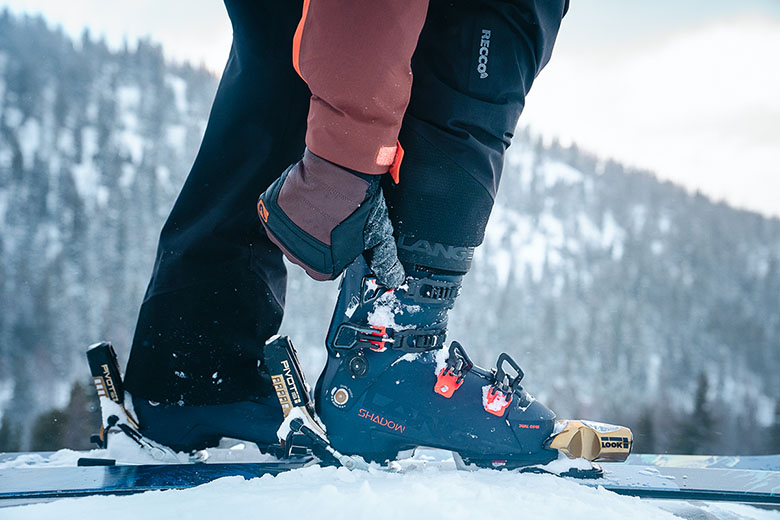
Whether you've been skiing since the '70s or are about to buy your first setup, your selection of skis, boots, and bindings—what we call "hard goods"—is the foundation for both performance and safety. This is especially true when it comes to boots and bindings, which work together to keep you attached to your skis or release in the event of a fall. To enhance performance while minimizing the risk of injury, boot and binding manufacturers have introduced a wide range of options for various applications. However, not all boots and bindings are compatible, and recent innovations like hybrid bindings and GripWalk soles have muddied the waters even further. To help you make sense of it all, we’ve detailed everything you need to know about boot and binding compatibility below. And for a look at our top picks in each category, check out our detailed ski gear reviews.
When properly paired and set up by a knowledgeable technician, ski boots and bindings keep you on your skis when you should be and release you in the case of a crash. An incompatible pairing can lead to a premature release or your skis to stay on even at higher forces—both of which can potentially result in injury. As ski gear wears out and new models are added to the market, many folks will find themselves wanting to update their hard goods. Since ski gear is expensive, you may be planning to update one piece at a time: new downhill boots this year, new downhill bindings next year, etc. While this can be a good strategy financially, you'll need to make sure that any new components are compatible with the old pieces you're still using.
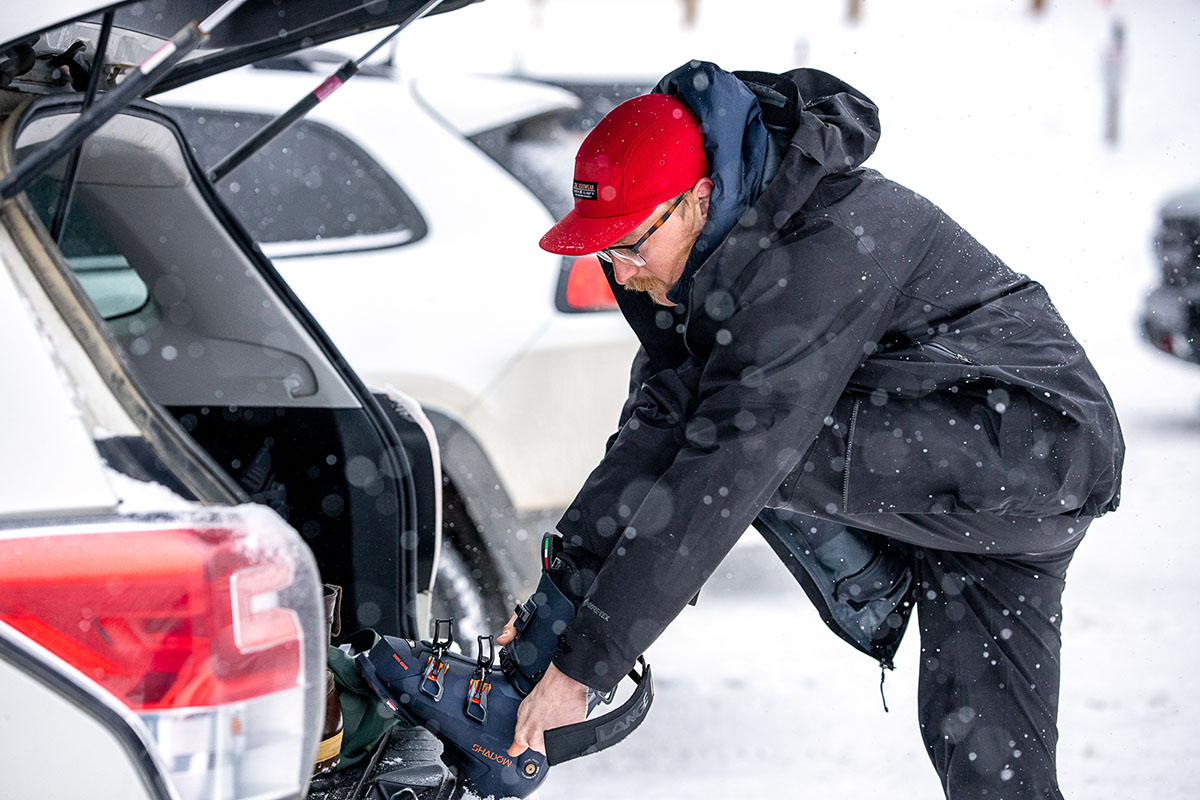
We put together a chart below to verify which type(s) of bindings your boot is compatible with to make pairing the two as simple as possible. To learn more about what each of these terms means and the various uses for each style of boot and binding, read on for our breakdown of the different technologies. And a final note: While the chart below describes the general compatibility for these boot and binding types, note that all boots and bindings need to be set up and adjusted by a professional technician to be properly tested.
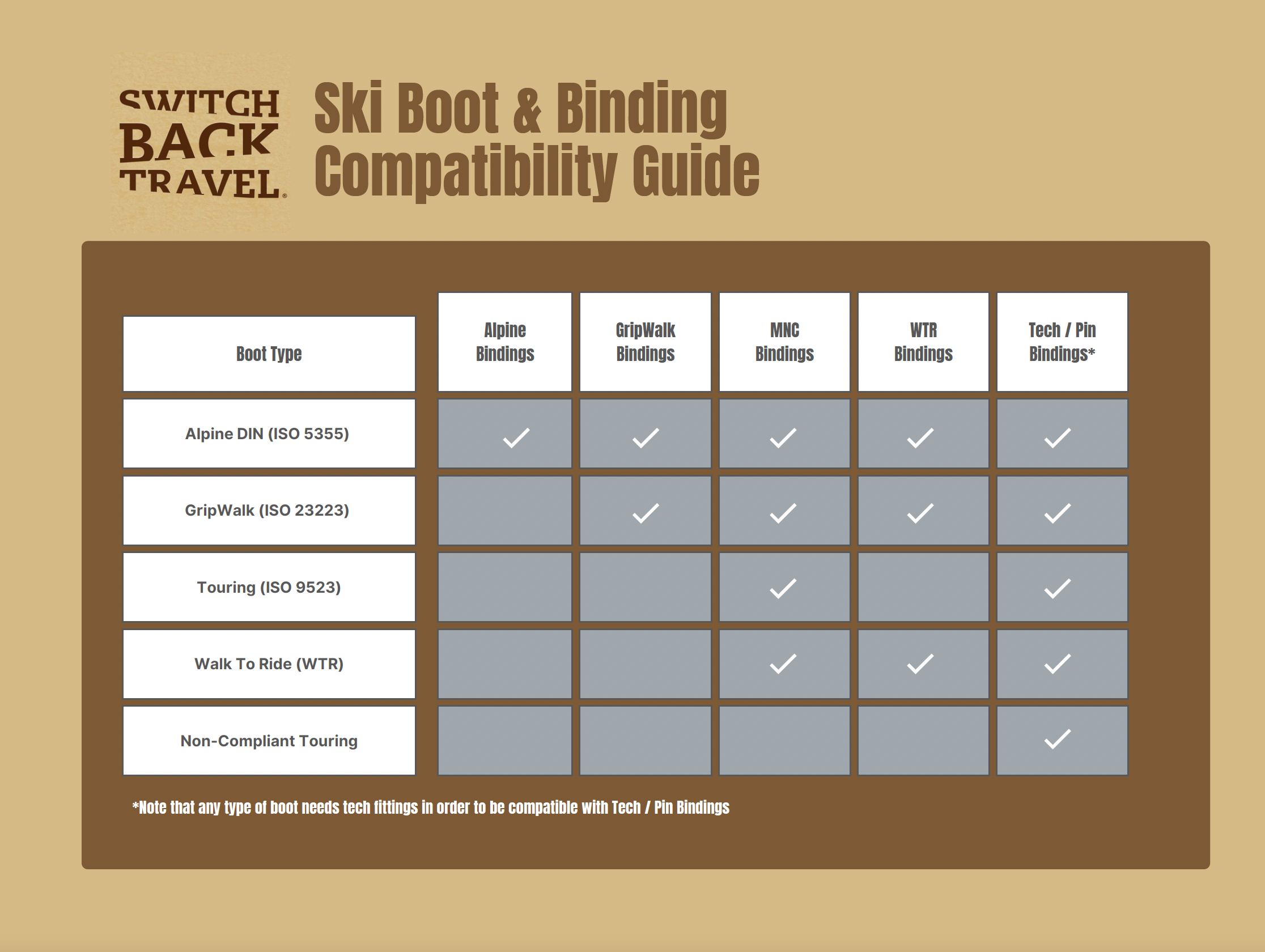
Ski boots fall into two main categories: alpine and alpine touring. Alpine ski boots, also known as downhill ski boots, are built for lift-accessed skiing at a resort. Alpine touring boots, which also go by “AT”, "backcountry", or simply “touring” boots, are designed for both walking uphill (skinning) and riding down, both of which are required to earn turns in the backcountry. There are several subcategories here, but boot and binding compatibility largely comes down to your ski boot’s sole. Below we break down the four key groups of boots according to their sole and compatible bindings.
Traditional alpine boots—which fall under the ISO 5355 boot sole norm—are the most common choice for downhill riders and characterized by a flat sole profile. These boots offer a consistent release value, efficient power transfer, and are compatible with almost any alpine binding, including Multi-Norm Certified (MNC) and GripWalk bindings. Some ISO 5355 boots are even compatible with tech bindings—provided they have metal holes (known as tech fittings or pin inserts) at the toe for the pins to latch into.
Compatibility: Alpine boots (ISO 5355) are compatible with alpine, MNC, GripWalk, and tech/pin bindings.
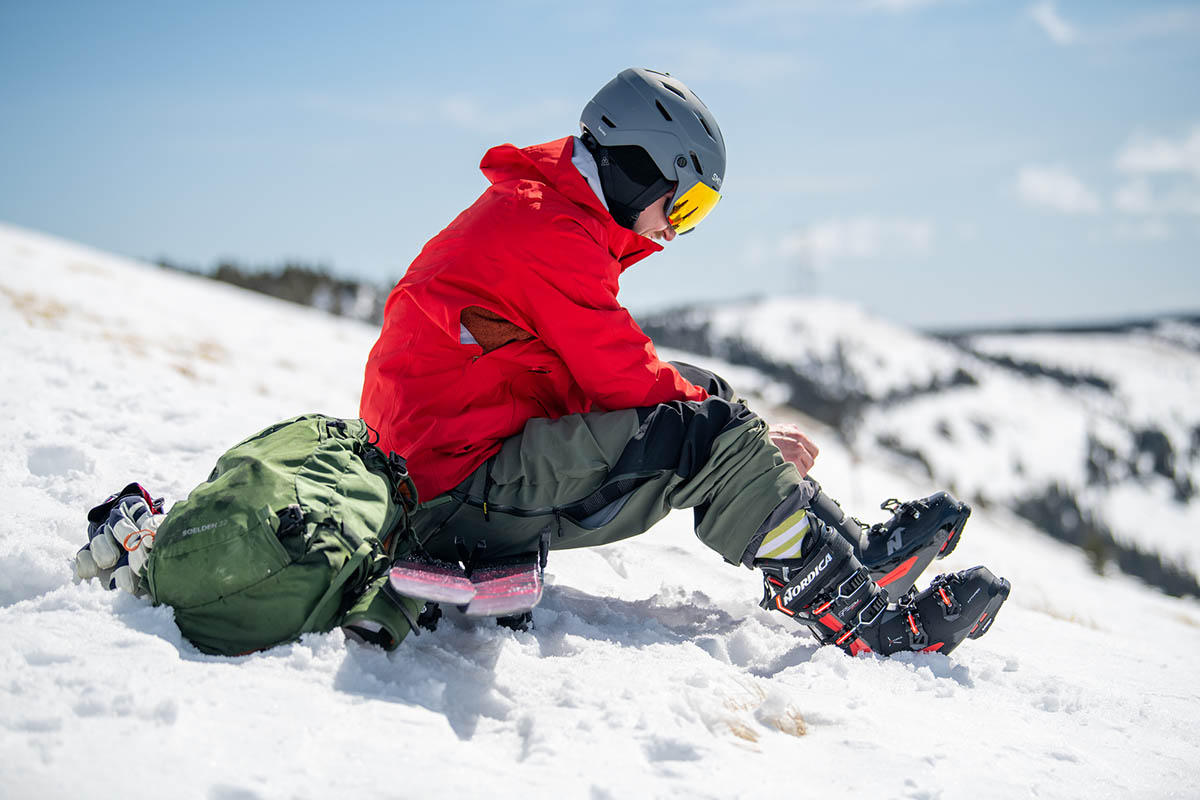
 GripWalk boots (ISO 23223) have a rockered sole and better grip than traditional alpine boots, which helps promote a more natural stride and makes it easier to navigate icy parking lots or hike into the sidecountry. Like alpine boots, those with GripWalk soles offer a consistent release value, but they won’t work with traditional alpine bindings. Instead, they require a dedicated GripWalk-compatible/multi-norm-ready binding like the Salomon Shift MNC, Marker’s ID models that feature their Sole.ID, or any design that displays the GripWalk logo or name (often shortened to just “GW”). As the GripWalk design continues to gain popularity, this style of sole is quickly becoming the norm in both the alpine and alpine touring boot categories. Be sure to look for the logo on compatible products.
GripWalk boots (ISO 23223) have a rockered sole and better grip than traditional alpine boots, which helps promote a more natural stride and makes it easier to navigate icy parking lots or hike into the sidecountry. Like alpine boots, those with GripWalk soles offer a consistent release value, but they won’t work with traditional alpine bindings. Instead, they require a dedicated GripWalk-compatible/multi-norm-ready binding like the Salomon Shift MNC, Marker’s ID models that feature their Sole.ID, or any design that displays the GripWalk logo or name (often shortened to just “GW”). As the GripWalk design continues to gain popularity, this style of sole is quickly becoming the norm in both the alpine and alpine touring boot categories. Be sure to look for the logo on compatible products.
Compatibility: GripWalk soles (ISO 23223) are compatible with MNC and Marker Sole.ID bindings, any design with a GripWalk or “GW” designation, and tech/pin bindings.
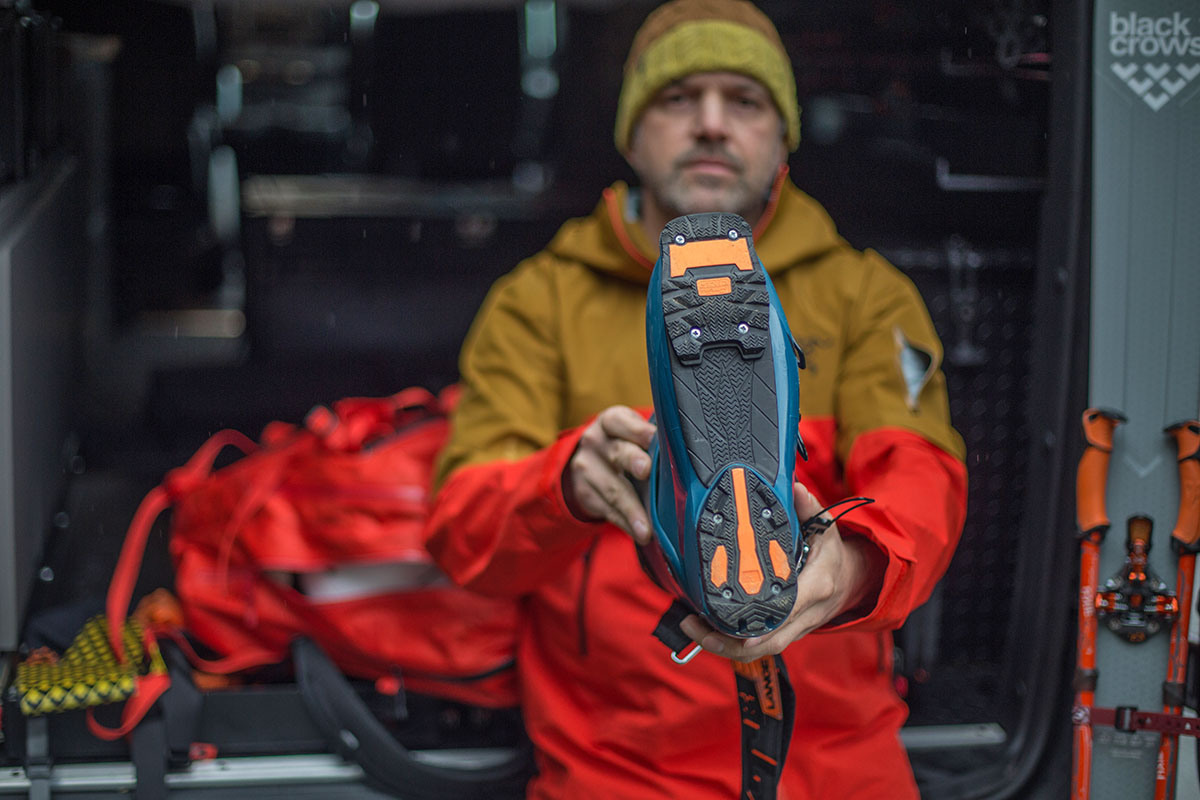
 Walk to Ride (WTR) soles are a predecessor to GripWalk and can be found on both alpine and touring boots. Although they’re getting phased out as the GripWalk design becomes more ubiquitous, WTR soles are still found on boot models as recent as 2019. Originally designed as a crossover style between traditional alpine and backcountry boots, WTR models incorporate the rockered sole and rubber traction of an AT boot alongside the consistent release value and hard plastic components of an alpine design. However, WTR boots are only compatible with WTR, MNC, or tech/pin bindings and will not work with traditional alpine or GripWalk designs.
Walk to Ride (WTR) soles are a predecessor to GripWalk and can be found on both alpine and touring boots. Although they’re getting phased out as the GripWalk design becomes more ubiquitous, WTR soles are still found on boot models as recent as 2019. Originally designed as a crossover style between traditional alpine and backcountry boots, WTR models incorporate the rockered sole and rubber traction of an AT boot alongside the consistent release value and hard plastic components of an alpine design. However, WTR boots are only compatible with WTR, MNC, or tech/pin bindings and will not work with traditional alpine or GripWalk designs.
Compatibility: WTR soles are only compatible with WTR, MNC, and tech/pin bindings.
Touring boots, also known as alpine touring, AT, or backcountry ski boots, are largely designed according to the ISO 9523 standard and characterized by a rockered sole with grippy rubber for comfortably walking on a variety of surfaces. Additionally, the vast majority of AT boots have lateral divots on the toe for connecting to pin bindings—the pins secure into the slots to keep your toe locked in when skinning, while your heel remains free. It’s important to note that some styles of AT boots don’t meet the ISO 9523 standard (we cover the major outliers below), but those that do are compatible with bindings designed for ISO 9523 soles, as well as MNC and Marker Sole.ID bindings.
Compatibility: AT boots that meet the ISO 9523 standard are compatible with MNC, Marker Sole.ID, and any AT bindings designed for ISO 9523 boots.
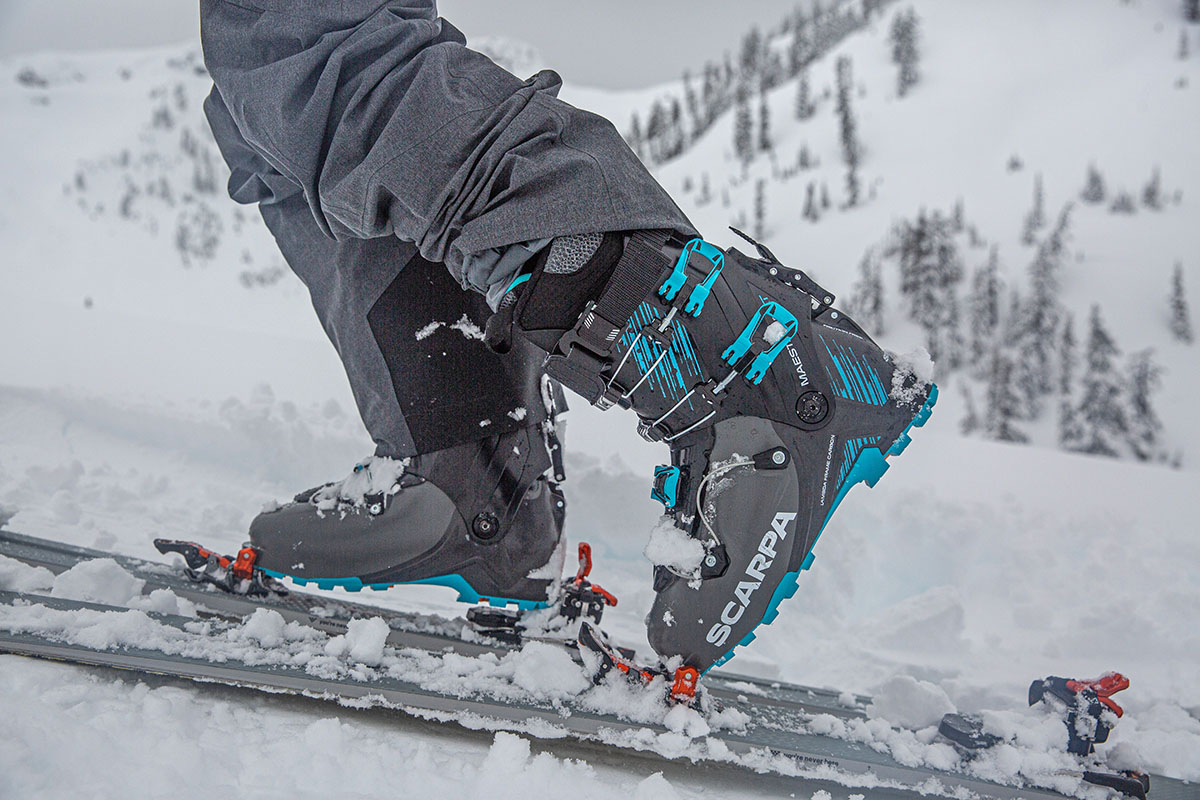
Like ski boots, bindings fall into different categories according to the ISO standard they meet. All alpine bindings you’ll find on the market today meet the ISO 9462 standard. Touring bindings built with a spring-loaded heel piece (which comprise the majority of the market) meet ISO 13992 and include frame, hybrid, and many styles of tech bindings. Note, however, that some tech bindings are designed without elastic travel in the heel piece and therefore do not meet ISO 13992. Nonetheless, there’s still universal standardization in other aspects of tech binding design, meaning they’re compatible with any ski boot that has tech fittings at the toe.
Finally, there are several “hybrid” bindings that feature a standard alpine heel with a toe piece that functions like a tech toe on the uphill but converts into a traditional downhill design in ski mode. These non-standard models do not meet an ISO but will work with any ISO 9523 touring boot that has pin fittings in the toe, regardless of the sole. We provide more detail on each of the different bindings below.
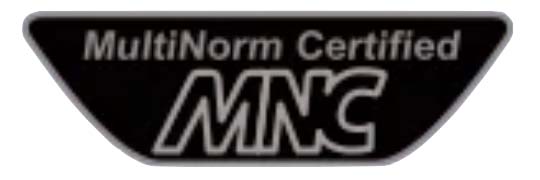 As we mentioned above, all traditional alpine bindings meet ISO 9462, which is the standard for downhill binding performance and dimensions for boots. If an ISO 9462-designated binding does not specify compatibility with a GripWalk, MNC, WTR, or Sole.ID stamp, it will only work with traditional alpine ski boots (ISO 5355). If it displays one of the designation stamps mentioned, it will be compatible with any ski boot that shares the same designation. On the flip side, bindings designated for GripWalk will work with both alpine boot soles (ISO 5355) and GripWalk boot soles (ISO 23223). Similarly, WTR bindings will work with ISO 5355 and WTR boot soles (but not ISO 9523 alpine touring soles).
As we mentioned above, all traditional alpine bindings meet ISO 9462, which is the standard for downhill binding performance and dimensions for boots. If an ISO 9462-designated binding does not specify compatibility with a GripWalk, MNC, WTR, or Sole.ID stamp, it will only work with traditional alpine ski boots (ISO 5355). If it displays one of the designation stamps mentioned, it will be compatible with any ski boot that shares the same designation. On the flip side, bindings designated for GripWalk will work with both alpine boot soles (ISO 5355) and GripWalk boot soles (ISO 23223). Similarly, WTR bindings will work with ISO 5355 and WTR boot soles (but not ISO 9523 alpine touring soles).
Compatibility: Alpine bindings (ISO 9462) are compatible with alpine boots (ISO 5355), as well as some GripWalk and WTR boots (if specified). Correspondingly, bindings designed for GripWalk or WTR soles are compatible with traditional alpine boots.
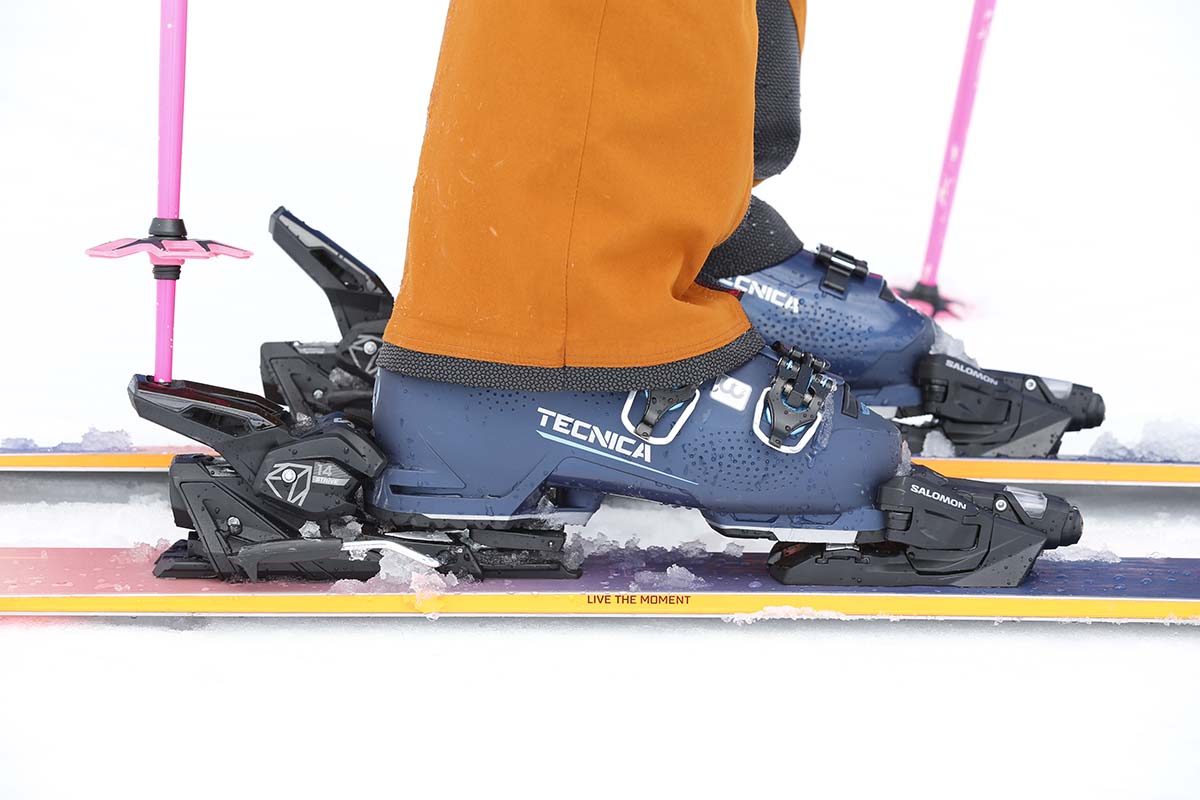
Multi-Norm Certified (MNC) is the most versatile type of ski binding and compatible with almost all boots, including ISO 5355 alpine, ISO 9523 alpine touring, GripWalk, and WTR soles. MNC bindings are designed and manufactured by Salomon/Atomic/Armada (all under the same parent company), and there are a few different models within the MNC family, including the Strive 14 MN and Shift (more on this hybrid binding below). On a similar note, Marker’s Sole.ID bindings, like the popular Griffon 13 ID, are also compatible with alpine, alpine touring, GripWalk, and WTR soles. Both MNC and Sole.ID bindings are great options for skiers that utilize their touring boots (with ISO 9523 soles) on resort days.
Compatibility: MNC and Sole.ID bindings are compatible with alpine, GripWalk, WTR, and ISO 9523 AT boots.
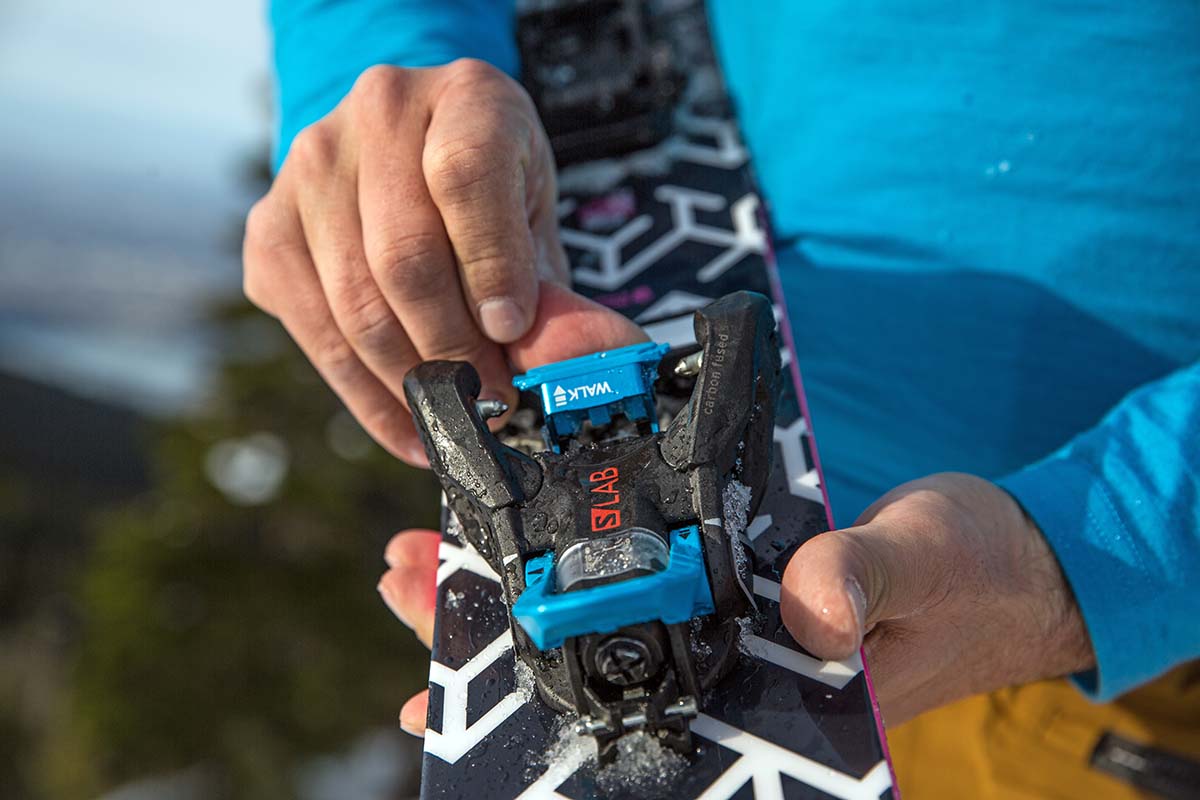
Alpine touring bindings, also known as backcountry ski bindings, fall into three categories: tech, frame, and hybrid. Tech bindings, sometimes referred to as pin bindings, are the most popular style for avid backcountry skiers. They’re the lightest weight, typically ranging from 1 to 3 pounds per pair, and the most efficient option for walking uphill on skis. Usually, tech bindings have separate toe and heel pieces, which is part of what keeps them so light. This style of binding is only compatible with ski boots that have tech fittings, which are small notches at the front where the binding pins attach. Most (but not all) tech bindings meet the ISO 13992 standard (see below for a list of exceptions). All frame and hybrid AT bindings also meet the ISO 13992 standard. For a deeper dive into the differences between these three categories, check out our article on Backcountry Ski Bindings: Tech vs. Frame vs. Hybrid.
Compatibility: Tech bindings are only compatible with ski boots that have tech fittings.
Frame bindings are essentially traditional alpine bindings secured to a rail that extends from heel to toe. The rail attaches and releases from the heel to allow for uphill movement. Frame bindings don’t require boots to have tech fittings, so they’ll work with any alpine boot that has walk mode. That said, this binding style is heavy (typically around 3.5 to 7 lb.), clunky, and the least efficient option on the uphill. Frame bindings are also likely to become obsolete as hybrid bindings rise in popularity, but they remain a good value option for skiers who want just one setup and only tour occasionally.
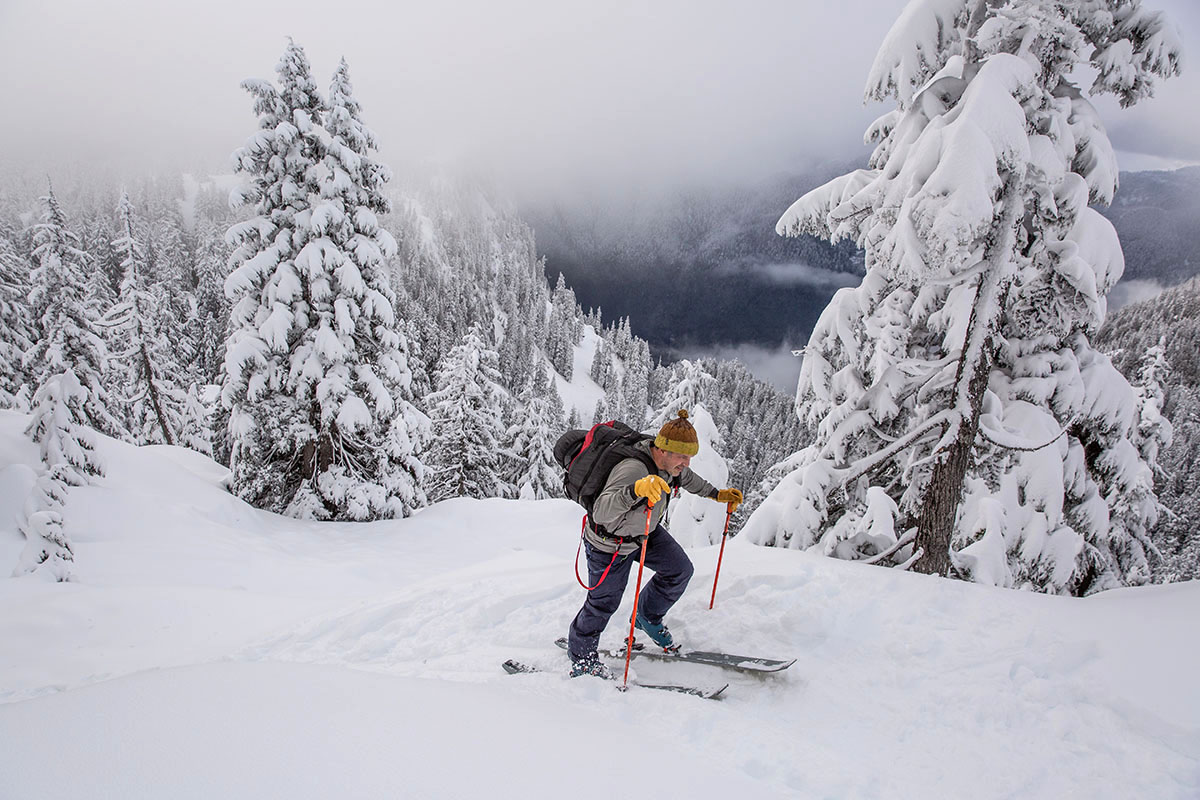
Finally, hybrid ski bindings feature a toe piece that looks and functions similarly to a pin binding and a heel piece that resembles a traditional alpine binding. Salomon’s S/Lab Shift MNC popularized the hybrid category, and Marker followed suit with their similarly intentioned Duke PT. Both designs aim to combine the uphill efficiency of a tech binding with the downhill performance and safety assurance of an alpine binding (both the Salomon and Marker are TÜV-certified for DIN). Additionally, hybrid bindings offer near-universal versatility in terms of boot sole compatibility and will work with ISO 5355 alpine, ISO 9523 AT, and GW boots. While these designs are considerably heavier than standard tech bindings (typically around 4 to 6 lb. per pair) and have more moving parts that can fail or ice up, they can be a nice middle ground for skiers who split their time between the lifts and the skin track.
Compatibility: Frame and hybrid AT bindings are typically compatible with ISO 9523 alpine touring, ISO 5355 alpine ski boots, and GW soles.
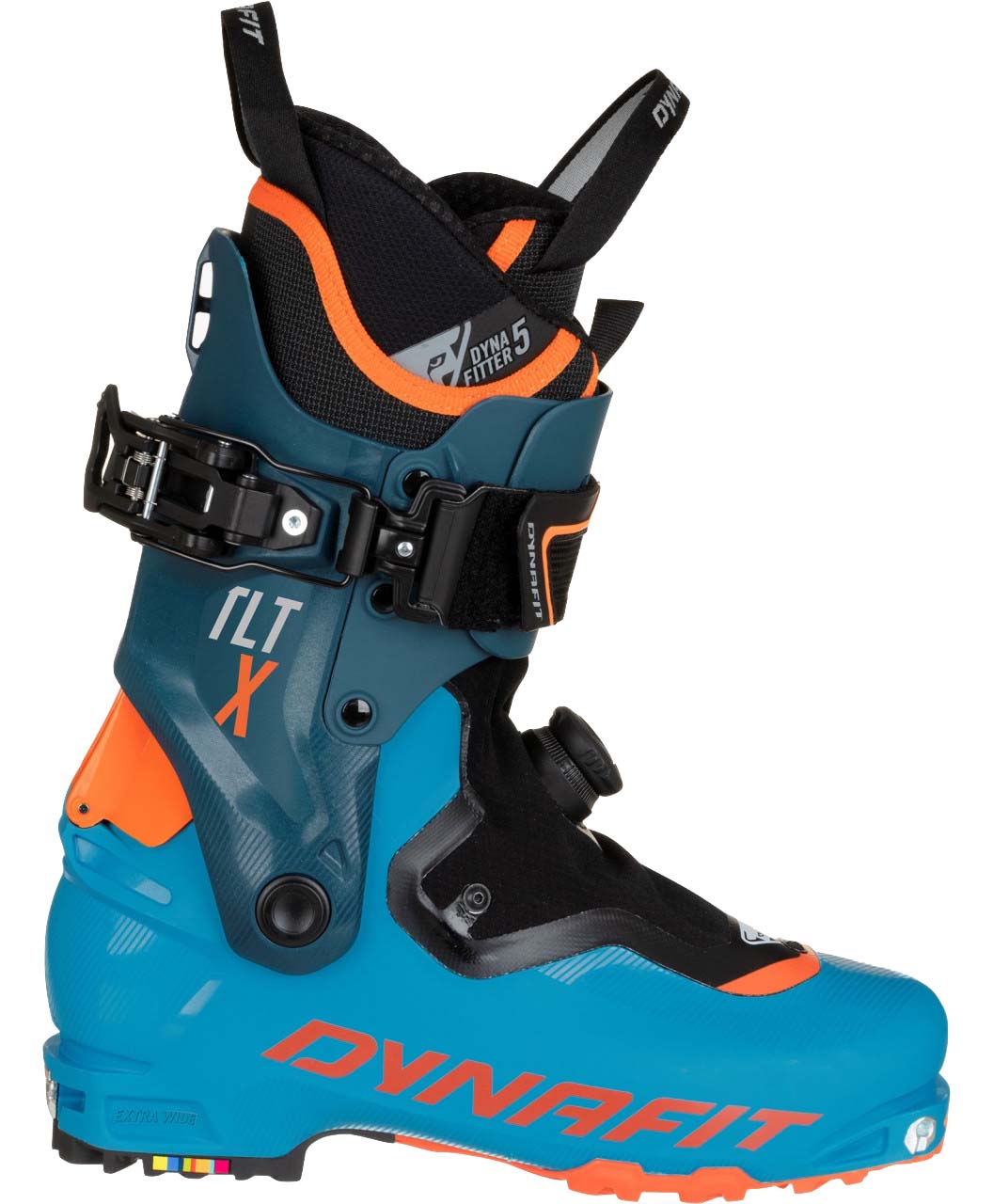 Some alpine touring boots do not fit within any of the boot categories above, nor do they meet any ISO standards. Typically, such boots are designed with a priority for efficient uphill movement and have special design features to make them fast and light. One example is Dynafit’s “Speed Nose” design, which they’ve incorporated on many of their ultralight boots in recent years and boasts a smooth, shorter toe box that places the pin divots close to the front of the boot to increase efficiency when skinning. Skimo race boots are another example of non-standard AT boots and designed for the very specific purpose of moving uphill as fast as possible. Although impressively lightweight, these designs eschew many of the design elements of a typical ski boot in favor of weight savings. They’re also not compatible with hybrid or MNC bindings, although most standard tech bindings will still work.
Some alpine touring boots do not fit within any of the boot categories above, nor do they meet any ISO standards. Typically, such boots are designed with a priority for efficient uphill movement and have special design features to make them fast and light. One example is Dynafit’s “Speed Nose” design, which they’ve incorporated on many of their ultralight boots in recent years and boasts a smooth, shorter toe box that places the pin divots close to the front of the boot to increase efficiency when skinning. Skimo race boots are another example of non-standard AT boots and designed for the very specific purpose of moving uphill as fast as possible. Although impressively lightweight, these designs eschew many of the design elements of a typical ski boot in favor of weight savings. They’re also not compatible with hybrid or MNC bindings, although most standard tech bindings will still work.
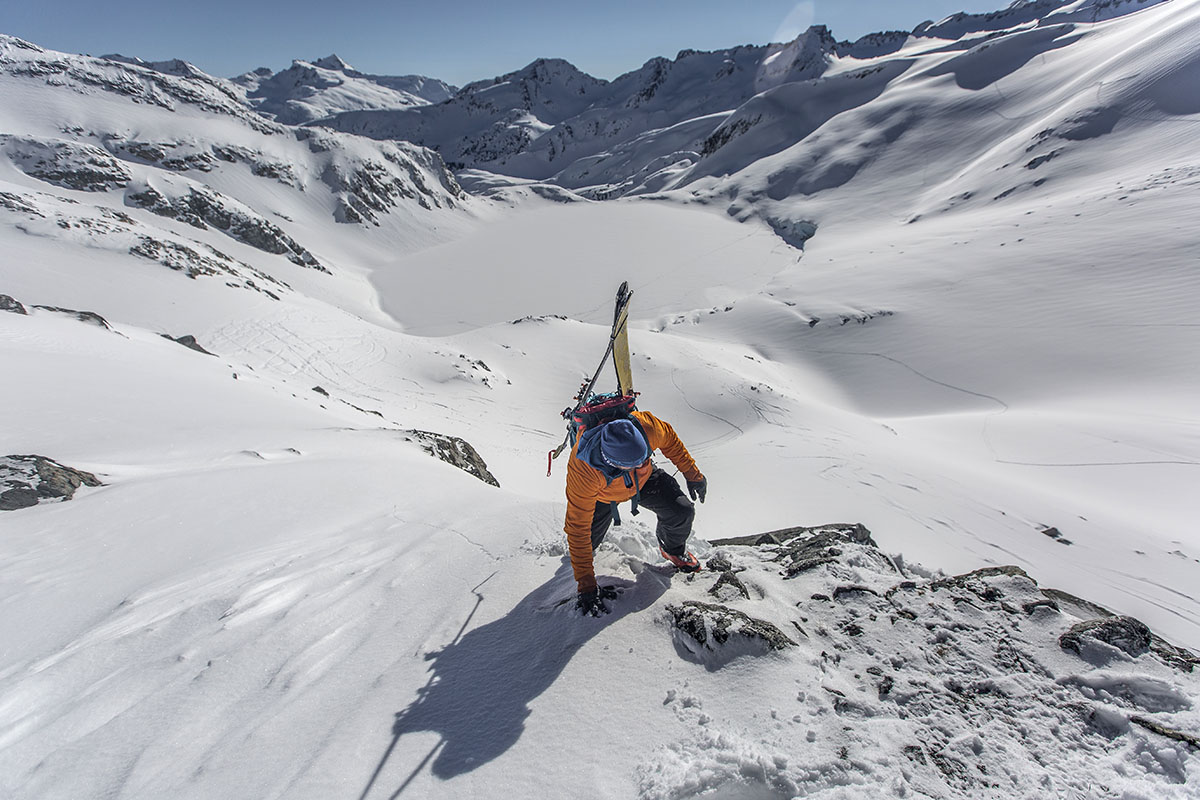
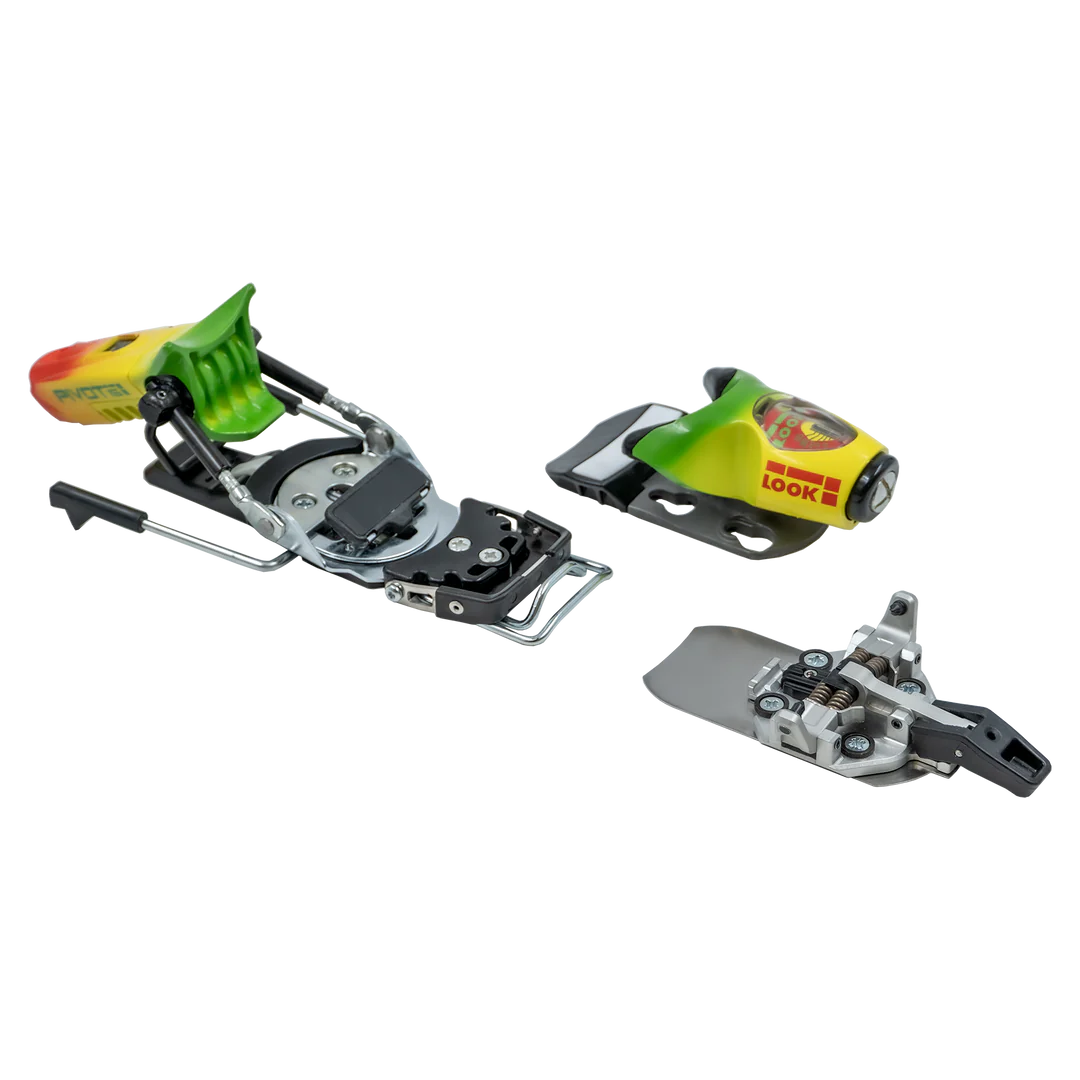
Cast’s Freetour bindings take the Look Pivot (a popular alpine freeride binding) and add a swappable tech toe piece for uphill travel—very similar to hybrid designs like the Salomon Shift and Marker Duke PT mentioned above. However, unlike those models, Cast bindings require removing and swapping out the toe piece during uphill/downhill transitions, allowing you to reap the security and performance benefits of a standard alpine binding on the descent. In terms of compatibility, the Freetour will work with ISO 5355 alpine, ISO 23223 GripWalk, and ISO 9523 touring boot soles, although you must purchase the right AFD for your boot sole type (or multiple AFDs if you have different boots you plan to use with the binding). Cast’s AFDs are sold separately for $15 per pair.
ISO—which we’ve mentioned many times throughout this article—stands for the International Organization for Standardization. This body is an independent, non-government entity that sets global consensus-based standards to ensure safety and quality across many sectors. When a boot or binding is certified to a certain ISO standard, it means that it’s compliant with a particular set of rules and requirements that have been deemed critical.
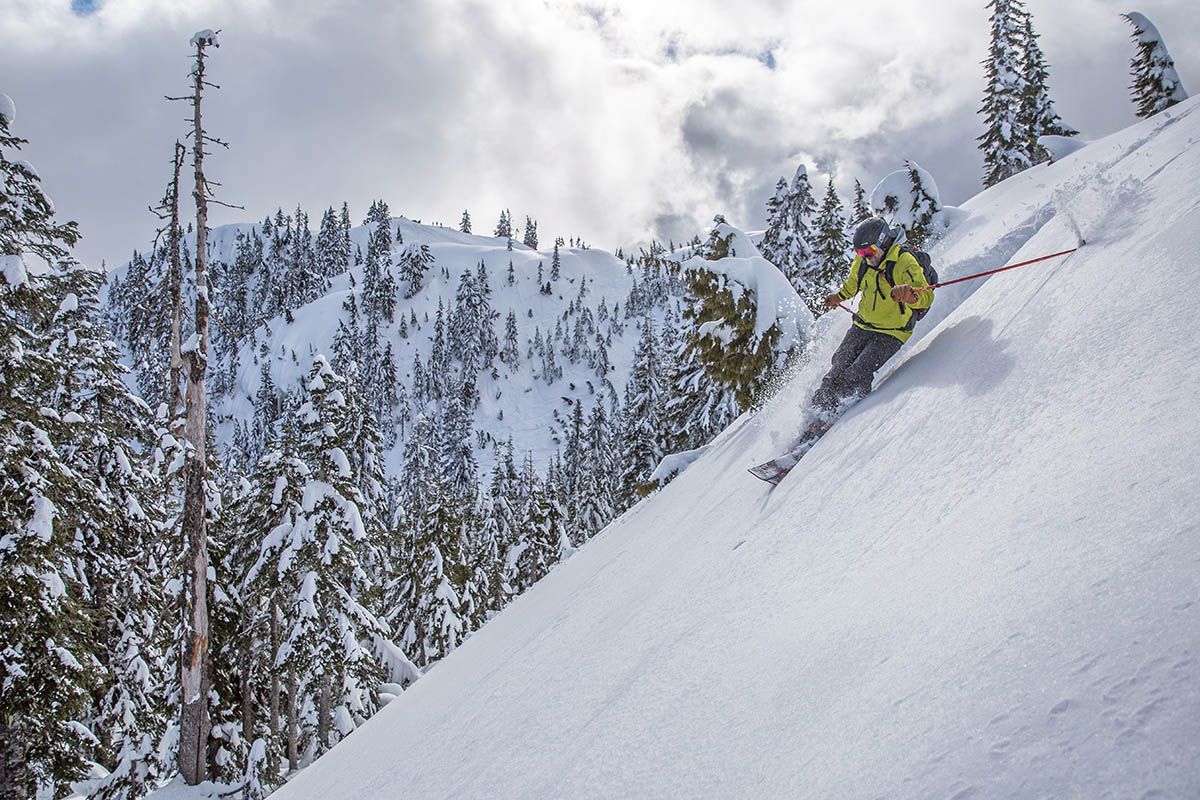
A binding’s release value indicates the amount of force that must be exerted on the binding before it releases your boot. The numbers range from 1 to 18, and the higher you go, the longer the binding will keep you locked in under force. Lighter and less aggressive skiers typically set lower release values, while heavier and more powerful riders will opt for higher values. It is critical to get this number right, as a binding that releases either prematurely or too late not only impacts your performance but can pose serious safety risks. A ski tech can help you determine and set the correct release value for your bindings.
In the alpine skiing world, release value is often referred to as DIN, which is short for Deutsches Institut für Normung (you can see why it’s abbreviated). DIN is measured via a standardized test administered by the TÜV (an international testing group based in Europe), and when a binding meets all requirements laid out by the DIN ISO 13992 specification, it’s considered “TÜV-certified.” In addition to alpine bindings, most hybrid and frame bindings are TÜV-certified, although relatively few tech bindings meet the requirements due to their unique toe and heel pieces.
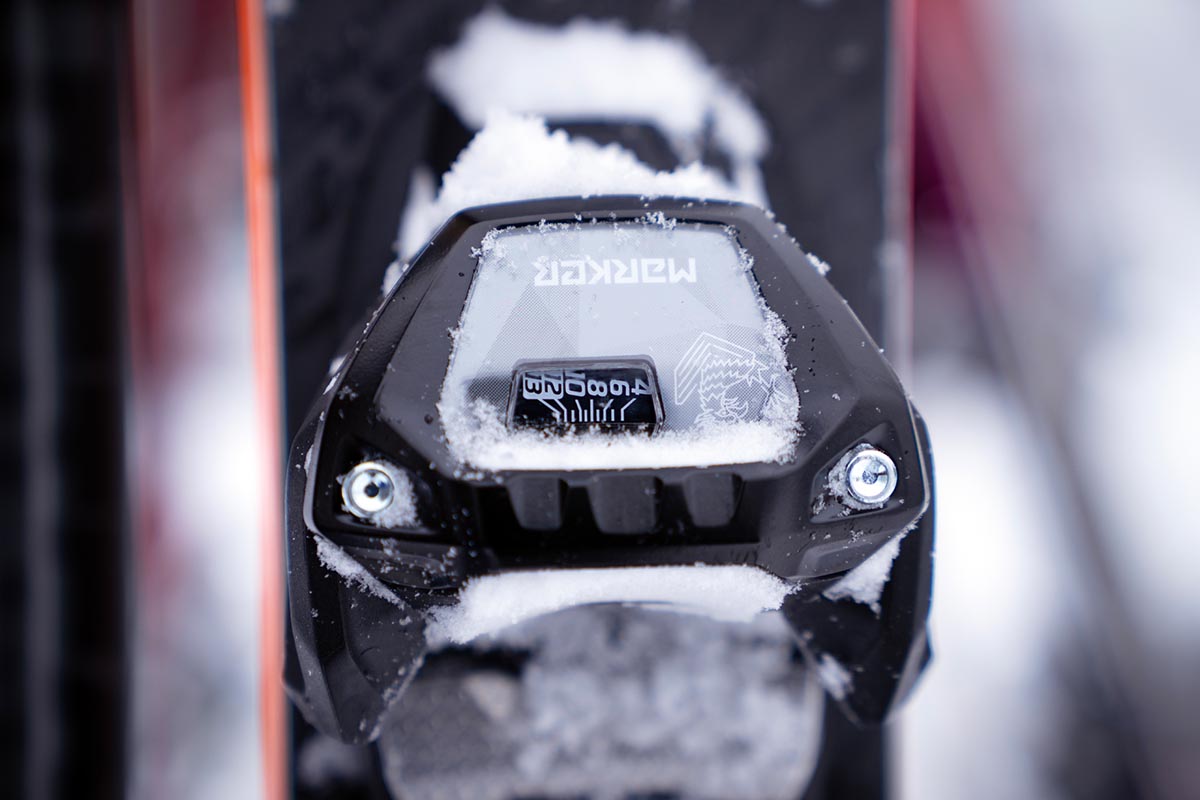
Brakes are the norm with alpine ski bindings, but when it comes to AT setups, skiers may opt for brakes, small leashes connecting a ski’s toe piece to the boot, or no brakes at all. If you’re purchasing bindings and need to choose a brake width, you’ll want to look for a brake that’s no more than 10 millimeters wider than your ski's waist. If your choices are limited, it’s better to choose a width that’s closer to your ski’s waist, and a ski tech can bend the brakes slightly if needed to make them fit. Avoid buying brakes that are too wide, as they can drag when you’re carving on firm snow.
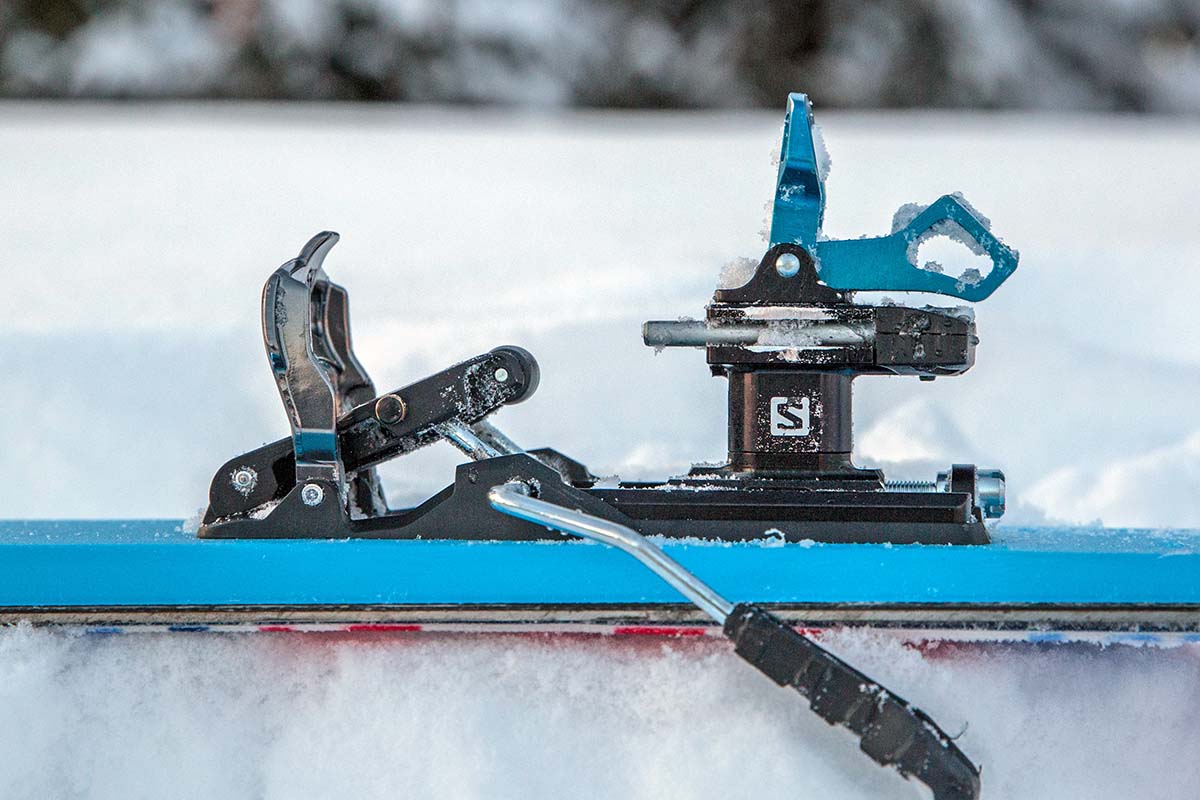
A binding’s antifriction device (commonly referred to as AFD) is the smooth pad underneath the toe that allows you to slide your boot out when the toe piece releases. Conversely, it also helps re-center your boot when you go to strap in. AFDs are standard among alpine and hybrid bindings, and they’re also found on several newer tech bindings.
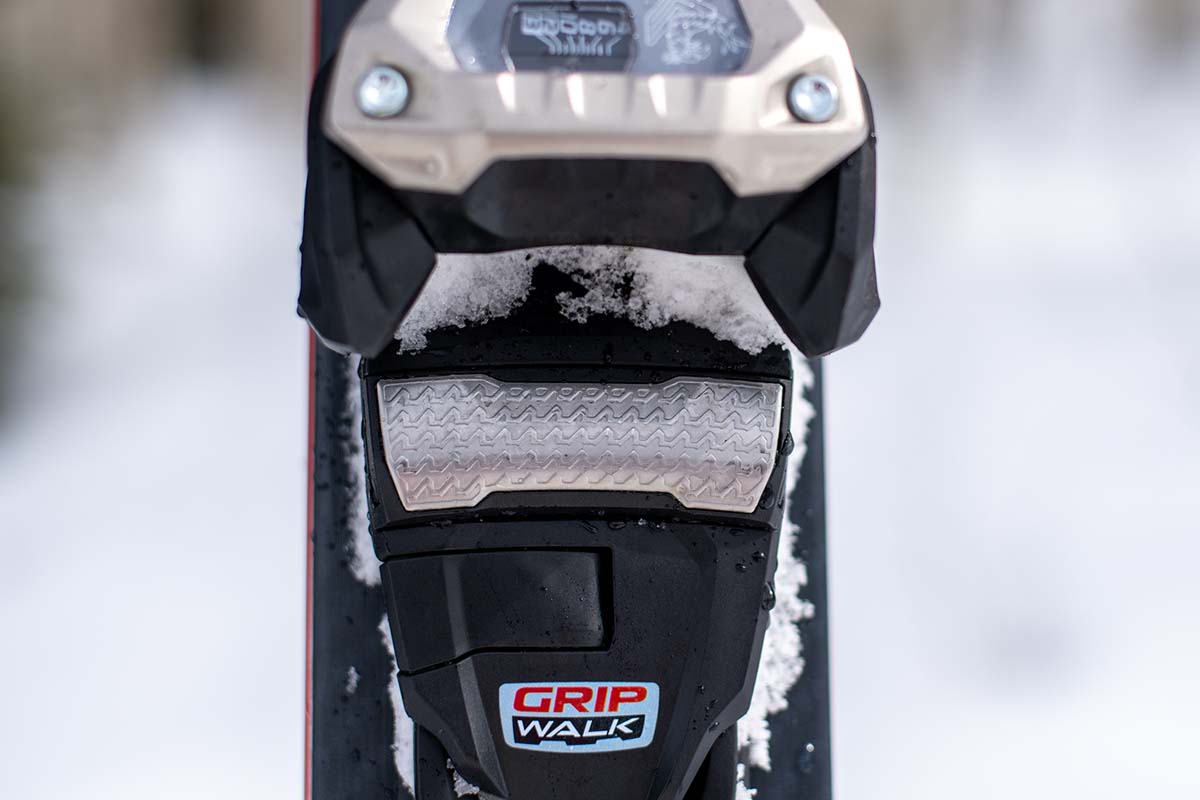
If you purchase new skis and bindings, you’ll likely need to get them mounted. Just about any ski shop can do this, and the average cost ranges from around $40 to $70. Many of REI’s 180+ stores also have a ski shop with good discounts on mounting services. Prices vary by store, but the rate at the flagship in Seattle last season was $60 for an alpine mounting. Importantly, members get 20% off shop services, and you’ll also receive a discount if you purchase the skis, boots, or bindings from REI. Evo and Backcountry also offer mounting services at their stores, although they’re few and far between compared to REI.

Ski gear works best as an integrated system. With that in mind, it's a good idea to research your skis, boots, and bindings together before making any purchases. There are important considerations aside from the basic compatibility issues outlined above. For example, you won’t want to mount an ultralight tech binding on a heavy powder ski or pair a burly hybrid AT binding with a light and flexible ski mountaineering ski. In both cases, you’ll be severely compromising the performance potential of your setup.
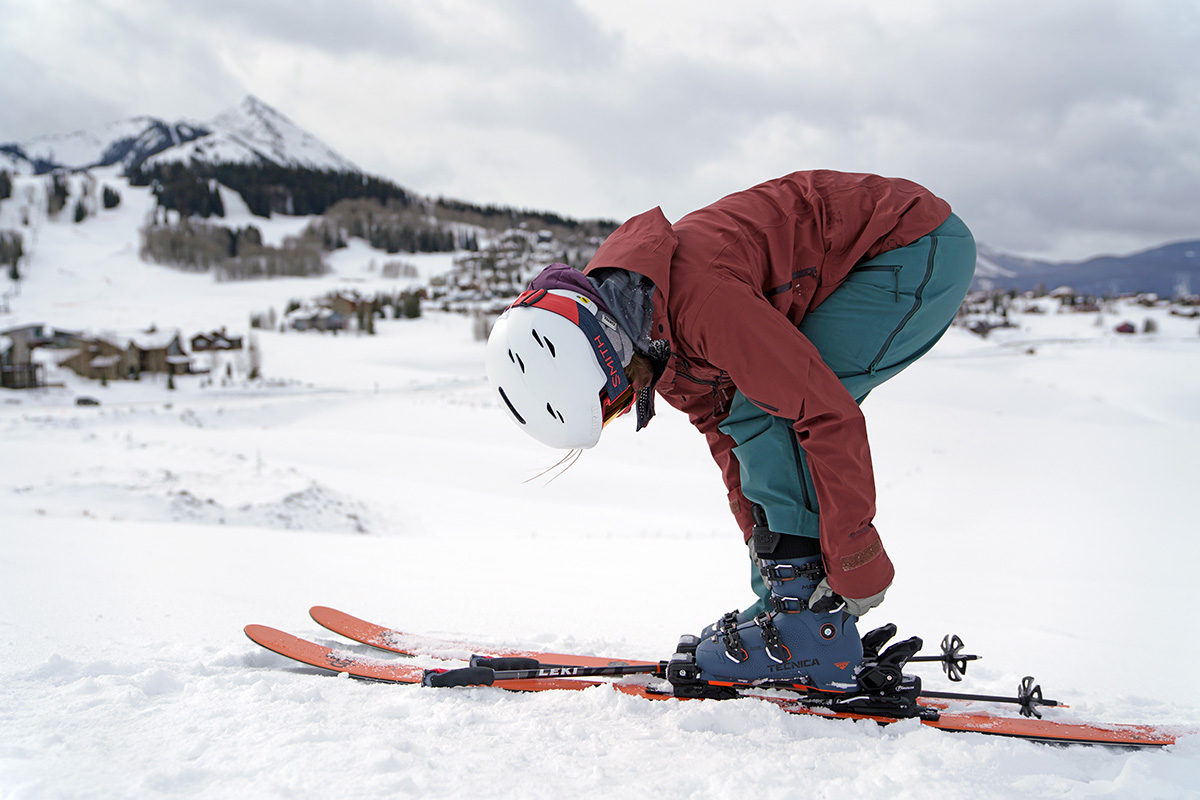
In order to get the most out of your ski kit, you’ll want to consider your riding style, preferred terrain, and where you plan to spend most of your time. For example, are you someone who enjoys the convenience of the resort or prefers all-day missions into the backcountry? Do you enjoy pushing your skills into steeper, gnarlier terrain or cruising at a leisurely speed on groomers? Answering these questions will help you pin down the right setup for you. For a wide look at the market, we’ve compiled lists of our favorite boots, bindings, and skis across both the downhill and backcountry categories:
Back to Our Boot and Binding Compatibility Guide See Our Ski Gear Reviews